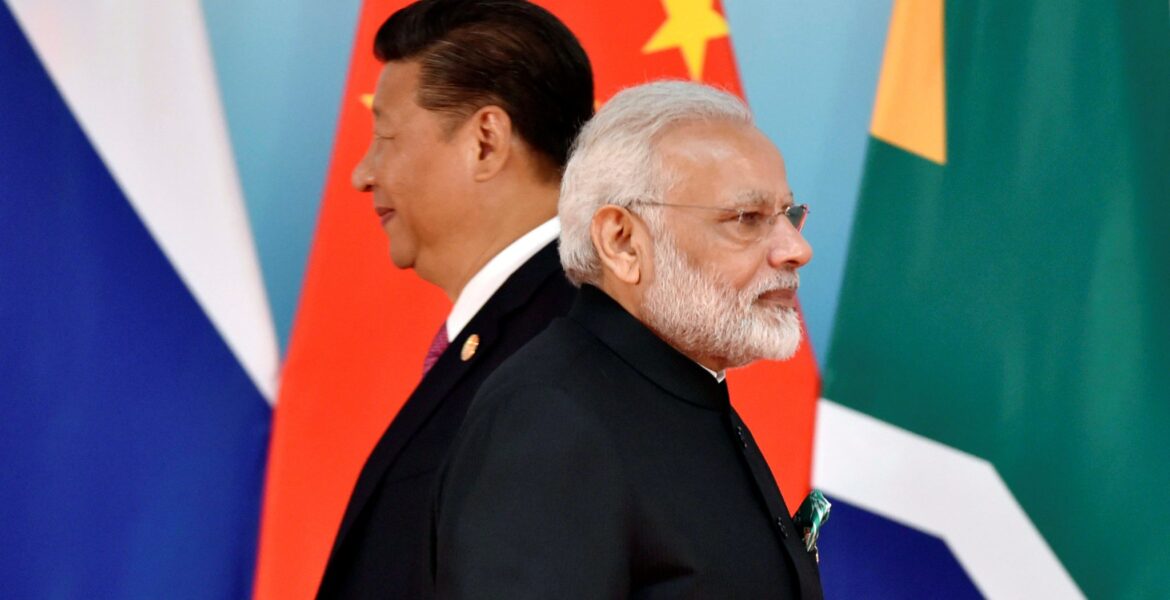On 1 April 2024, India and China marked the 74th anniversary of their diplomatic relations, though with a conspicuous lack of acknowledgement from Indian Prime Minister Narendra Modi and the Ministry of External Affairs (MEA). In contrast, the Chinese embassy in India posted on X, highlighting “the importance of adhering to consensus among leaders, managing differences, and nurturing stable bilateral ties for mutual gain”.
In a move inconsistent with its preaching, China released a new list renaming 30 places in the Indian state of Arunachal Pradesh, which China refers to as Zangnan (Southern Tibet), with Chinese and Tibetan names. The MEA responded by denouncing it as senseless.
“Assigning invented names will not alter the reality that Arunachal Pradesh is, has been, and will always be an integral and inalienable part of India,” stated official spokesperson Randhir Jaiswal. Meanwhile, Wang Wenbin, a spokesperson of the Chinese Ministry of Foreign Affairs, said, “The area of Zangnan is Chinese territory. The Chinese government has never recognized the so-called Arunachal Pradesh illegally set up by India and firmly opposes it. The China-India boundary question has yet to be solved. India has no right to arbitrarily develop the area of Zangnan in China.”
Chinese actions and statements are widely perceived as efforts to assert claims over Indian territory, possibly in response to Modi’s inauguration of the Sela Tunnel in Arunachal Pradesh on 9 March.
Catching up on border infrastructure
As India enters election mode, its attention shifts inward for the next few months. However, it remains alert to the threat posed by China. The Modi government has taken a firmer stance on China, highlighting the resolution of border disputes as a crucial step toward normalising bilateral relations. This stance diverges from China’s preference to maintain active disputes with frequent standoffs, highlighting a key difference in their interests and approaches.
Four years have passed since the violent clashes in Galwan, yet signs of reconciliation between India and China remain elusive. India has consistently upheld a steadfast China policy since at least 2020. It is enhancing its border infrastructure through initiatives such as Vibrant Villages and deploying additional troops along the Line of Actual Control (LAC).
The construction of the Sela Tunnel marks a strategically significant development. As per India’s Ministry of Defence press release, the Border Roads Organisation completed the tunnel at an altitude of 13,000 feet, linking Tezpur, Assam, to Tawang in the West Kameng district of Arunachal Pradesh. Media reports suggest that this infrastructure advancement will enhance all-weather connectivity and enable swift military deployment to Tawang and Kameng, both situated near India’s border with China. Modi’s visit to the state for the inauguration of the tunnel further underscores its importance.
China is getting India wrong
China believes that India is inflating threats and tensions for electoral advantage. This narrative dominates its state-owned media and platforms like Weibo. A commentary in the Global Times posited, “The Indian government’s recent actions aim to bolster Modi’s re-election prospects by cultivating a hawkish image to appeal to their nationalist voter base, thus deliberately escalating tensions with China.”
Another notable topic of discussion on Weibo centred around Tibet. A widely circulated post suggested that India harbours aspirations to reclaim all territories lost in the 1962 war. The post implied that despite India’s long-standing control over southern Tibet, its ambitions are not yet fulfilled, hinting at India’s covetousness toward Tibet.
There is a growing prevalence of derogatory elephant cartoons depicting India and Uncle Sam (representing the US), implying that India is heightening tensions with China on the US’ instructions. China has largely viewed India and its relationships predominantly through the lens of the US-China rivalry. This perspective is rooted in the belief that the US, given its economic and military prowess, is China’s primary competitor. However, with the global shift toward multipolarity, major and middle powers are gaining prominence and influence. India, in particular, is perceived differently now than in the past. While India has evolved, China’s perception of it has remained static, contributing to escalating tensions.
Interestingly, the US also aligned with India on Arunachal Pradesh, with the US State Department’s spokesperson affirming strong opposition to any unilateral attempts to assert territorial claims in the northeastern Indian state. In response to US support, China swiftly characterised the boundary dispute as an internal matter between Beijing and Delhi. Lin Jian, China’s Ministry of Foreign Affairs spokesperson emphasised, “The China-India boundary question is a matter between the two countries and has nothing to do with the US side. It is known to all that the US has consistently spared no efforts to provoke and take advantage of other countries’ conflicts to serve its selfish geopolitical interests.”
In reality, the tensions are not instigated by the US, nor is India acting at the behest of the US or amplifying tensions for electoral gain. What eludes China’s understanding is that India prioritises its national security over blind engagement with China. Nonetheless, it seems China struggles to acknowledge India’s rising influence. Treating India as an equal partner, prioritising bilateral relations independent of the US-China dynamic, and sincerely addressing concerns and differences are vital measures for fostering normalised relations.


